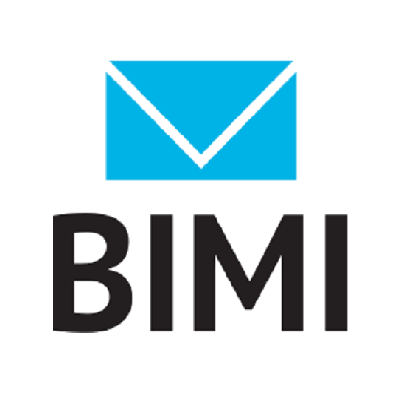Summary
Changing your DMARC record from a p=none policy to p=quarantine is a critical step for adopting BIMI (Brand Indicators for Message Identification). While p=none allows for monitoring DMARC reports without affecting email delivery, BIMI requires an enforcing policy like p=quarantine or p=reject. This transition requires careful planning and monitoring to avoid legitimate emails being sent to spam or junk folders. The process involves ensuring all legitimate email sources are properly authenticated with SPF and DKIM and analyzing DMARC aggregate reports to identify and resolve any authentication failures before enforcing a stricter policy.
Key findings
- BIMI requirement: For BIMI to display, your DMARC policy must be set to either p=quarantine or p=reject, as p=none is not supported. This ensures that only authenticated emails from your domain will show your brand logo.
- Gradual enforcement: It is crucial not to rush the transition from p=none to an enforcing policy. Incremental changes, often using the pct tag, are recommended to minimize risks of legitimate email being misclassified.
- Authentication alignment: Before enforcing a DMARC policy, all legitimate email sending sources must have correctly aligned SPF and DKIM records. This ensures that emails from your domain pass DMARC checks, preventing them from being quarantined or rejected. Learn more about DMARC, SPF, and DKIM.
- Monitoring reports: Continuous monitoring of DMARC aggregate reports (RUA) and forensic reports (RUF) is essential to identify issues and ensure that your transition does not disrupt email delivery. These reports provide insights into your email ecosystem.
- Impact of quarantine: A p=quarantine policy instructs receiving mail servers to treat emails that fail DMARC checks with suspicion, often placing them in the spam or junk folder. This is a softer enforcement than p=reject, which blocks them entirely.
Key considerations
- Comprehensive analysis: Before changing your policy, analyze all email sending sources from your domain. Identify both authorized and unauthorized senders using DMARC aggregate reports to ensure compliance with your policy.
- Vendor compliance: Ensure that all third-party email vendors (like ESPs) support DMARC alignment for SPF and DKIM. If a vendor cannot align, consider switching to one that does, or excluding them from DMARC enforcement.
- Percentage rollout: Consider using the pct tag to gradually increase the percentage of emails subject to the quarantine policy. This allows for controlled testing and quick rollback if issues arise, as detailed by Iterable’s DMARC guide.
- Internal process updates: Update internal standard operating procedures (SOPs) to reflect the new DMARC policy and the importance of maintaining proper email authentication. You can learn more about switching DMARC configuration here.
- Ongoing validation: Even after the transition, continue to monitor your DMARC reports and periodically review your email sending infrastructure to ensure ongoing compliance and optimal deliverability.


















































What email marketers say
Email marketers often discuss the practical steps and challenges involved in moving from a passive DMARC policy (p=none) to an active one (p=quarantine or p=reject), especially when aiming for BIMI implementation. Their experiences highlight the importance of careful preparation, continuous monitoring, and understanding the nuances of email authentication. Many emphasize a phased approach to minimize disruption to legitimate email flows and avoid inadvertently impacting deliverability. The common thread is that while BIMI offers significant brand visibility benefits, achieving the necessary DMARC enforcement requires diligence.
Key opinions
- Similar process: Many marketers agree that the process for implementing BIMI or just deploying DMARC with an enforcing policy is largely the same, focusing on authentication and monitoring.
- Phased approach: It is generally advised to avoid rushing the transition from p=none to an enforcing policy, using gradual steps to prevent issues with legitimate mail.
- DMARC reports: Utilizing services that visualize DMARC reports is considered critical for easily identifying and resolving issues during the policy transition.
- No issues with reject: Some marketers have successfully moved directly to p=reject for BIMI without reported problems, suggesting that a strong policy can be adopted if authentication is solid.
Key considerations
- Review email sources: Marketers emphasize the need to review DMARC aggregate reports thoroughly to identify all email sources sending from your domain before making policy changes.
- Align authentication: Ensure that all identified email sources have properly aligned SPF and DKIM records to pass DMARC checks, or consider swapping out non-compliant vendors.
- Monitor closely: After changing the policy, continuous and close monitoring of DMARC reports is crucial to catch any unforeseen issues quickly. This helps prevent emails from being blocked or sent to spam.
- Internal SOPs: Updating internal standard operating procedures to reflect the use of DMARC helps maintain compliance and best practices over time.
- BIMI validation: Marketers find BIMI validation tools helpful to confirm their setup is correct and ready for BIMI display, such as the BIMI Group's validation page.
Marketer view
Email marketer from Email Geeks explains that the process for implementing BIMI or deploying DMARC with an enforcing policy is fundamentally the same. It starts with reviewing DMARC aggregate reports to identify all email sources sending from your domain. Once these sources are identified, you must ensure that each one has properly aligned SPF and DKIM records, adjusting or replacing vendors if they cannot support this requirement. This foundational work ensures your legitimate emails will pass authentication checks. Following the alignment, the next step is to switch your DMARC policy from p=none to your desired enforcing policy, such as p=quarantine. After the change, it is crucial to closely monitor your DMARC reports for any unexpected problems. Finally, updating internal standard operating procedures (SOPs) is important to reflect the consistent use of DMARC within your organization.
Marketer view
Email marketer from Email Geeks indicates there are always nuances to the DMARC implementation process. While the general steps are outlined, each domain and email ecosystem can present unique challenges. They also emphasize that there isn't really a shortcut to proper DMARC enforcement. It requires thoroughness and attention to detail rather than trying to bypass steps, which could lead to deliverability issues. This highlights the need for a comprehensive approach, taking into account all specific email sending practices and configurations before moving to a stricter DMARC policy. Rushing the process without considering these nuances can result in legitimate emails being misclassified as spam or blocked entirely, negating the benefits of DMARC and BIMI.
What the experts say
Email deliverability experts emphasize a methodical and data-driven approach to transitioning DMARC policies for BIMI. They stress that while the destination is an enforcing policy like quarantine or reject, the journey from p=none requires careful validation of all sending sources, meticulous alignment of SPF and DKIM, and continuous monitoring of DMARC reports. They highlight that skipping steps or rushing the process can lead to significant deliverability issues, potentially causing legitimate emails to be blocked or sent to spam. The consensus is that robust email authentication is paramount for both security and successful BIMI display.
Key opinions
- Data-driven approach: Experts universally recommend relying on DMARC aggregate reports to understand email traffic patterns and authentication results before modifying policies.
- Prerequisite authentication: Ensuring proper SPF and DKIM alignment for all legitimate sending sources is a non-negotiable prerequisite for DMARC enforcement and BIMI. Issues here will cause deliverability problems.
- Gradual deployment: Phased rollouts using the pct tag are crucial to mitigate risks when moving from p=none to quarantine.
- Monitoring is key: Continuous vigilance through DMARC reporting tools allows for rapid detection and correction of issues, safeguarding deliverability. For more on this, read about understanding and troubleshooting DMARC reports.
Key considerations
- Thorough audit: Perform a comprehensive audit of all email sending applications and services for your domain. Ensure each can correctly authenticate with SPF and DKIM.
- Understand impact: Recognize that a quarantine policy can send failing emails to spam, which might impact legitimate campaigns if not properly set up. See why quarantine might send emails to spam.
- Leverage reporting tools: Invest in or utilize DMARC reporting solutions to gain actionable insights from aggregate and forensic reports, which are vital for troubleshooting and optimization.
- Avoid shortcuts: There are no shortcuts to a robust DMARC implementation. Each step, from initial data gathering to policy enforcement, requires diligent execution to achieve desired security and deliverability outcomes.
Expert view
Email expert from SpamResource suggests that senders must first focus on authenticating all their email streams with SPF and DKIM. This foundational step is critical for ensuring that legitimate emails pass authentication checks before any DMARC policy is enforced. Without proper SPF and DKIM alignment, transitioning to p=quarantine or p=reject will inadvertently cause legitimate mail to be quarantined or rejected. They also advise regular monitoring of DMARC aggregate reports to identify any issues. This allows for necessary adjustments to authentication configurations, ensuring a smooth and safe transition to an enforcing DMARC policy, which is essential for BIMI.
Expert view
Email expert from WordToTheWise recommends a cautious and phased approach when moving DMARC policies from p=none to an enforcing policy like p=quarantine. They highlight the importance of utilizing the pct tag to gradually increase the percentage of emails subject to the new policy. This allows for controlled testing and identification of any unexpected issues without affecting the entire mail stream. By observing the impact at lower percentages, senders can fine-tune their authentication setup and address any misconfigurations before applying the policy to all mail. This strategy minimizes the risk of legitimate emails being blocked or sent to spam, ensuring a smooth transition and preserving deliverability.
What the documentation says
Official documentation and technical guides from organizations like the BIMI Group and prominent email service providers consistently reiterate the strict requirements for DMARC policy when implementing BIMI. They confirm that a p=none policy is insufficient, mandating at least p=quarantine or p=reject. These resources also outline the technical steps involved, emphasizing the need for robust SPF and DKIM authentication, the role of DMARC aggregate reports, and the controlled transition using mechanisms like the pct tag. The documentation serves as a definitive guide for compliance and best practices.
Key findings
- Enforcing policy required: BIMI explicitly requires a DMARC policy of p=quarantine or p=reject. The p=none policy is not sufficient for BIMI to function.
- Full authentication chain: Successful BIMI implementation hinges on authenticating all organizational emails with SPF, DKIM, and DMARC, ensuring all are aligned for proper validation.
- Quarantine action: A quarantine policy instructs receiving servers to place emails failing DMARC checks into spam or junk folders.
- Gradual adoption: The pct tag can be used to apply quarantine or reject policies to a percentage of mail, allowing for controlled rollout.
Key considerations
- Policy progression: Documentation suggests p=none is for testing, with a subsequent move to quarantine or reject as the ideal long-term policy.
- Report collection: The rua= (Report Email Address) tag is essential for receiving DMARC aggregate reports, which are vital for monitoring policy compliance.
- Verified Mark Certificate: Some mailbox providers may require a Verified Mark Certificate (VMC) in addition to the DMARC policy for BIMI display, adding another layer to the setup process. Learn more about BIMI FAQs for senders.
- Policy enforcement: The pct= tag, when set to 100, indicates that the enforced DMARC policy applies to all mail, signifying full policy activation.
Technical article
BIMI Group documentation outlines that to properly implement BIMI, organizations must first authenticate all their emails using SPF, DKIM, and DMARC. Crucially, it emphasizes that all these authentication protocols must be aligned. This means that the domains used in your SPF and DKIM records must align with the domain in your From: address. Furthermore, the DMARC policy itself must be at an enforcement level, specifically p=quarantine or p=reject. This rigorous authentication and policy enforcement ensure that only legitimate, authenticated emails from your brand will display your logo in the inbox, enhancing trust and brand recognition for recipients. Without this robust setup, BIMI will not function as intended.
Technical article
Mailgun's documentation on DMARC clarifies that for BIMI to be effective, the p= tag in your DMARC record must be set to quarantine or reject, as the none policy is explicitly not supported. This confirms the critical policy requirement for brands aiming to display their logo via BIMI. Additionally, the documentation notes that the rua= tag, or Report Email Address, is used to specify where DMARC aggregate reports should be sent. These aggregate reports are essential for monitoring DMARC compliance and identifying any issues with email authentication as you transition to a stricter policy. Proper configuration of both the p= and rua= tags is fundamental for successful DMARC and BIMI implementation.
Related resources
11 resources
Related pages
When should you use DMARC p=none, p=quarantine, or p=reject policies?
What are the requirements and implementation steps for BIMI?
How do I set up DMARC for BIMI and what are the key considerations?
Why did changing DMARC policy to quarantine send emails to spam, and how to fix it?
When switching DMARC configuration from none to quarantine, is it best to do so in increments, or all at once?
What DMARC policy settings are required for BIMI and how do I determine the best setting for sp=?
Simple DMARC examples: how to start with a p=none policy
How to safely transition your DMARC policy to quarantine or reject
Understanding and troubleshooting DMARC reports from Google and Yahoo
A simple guide to DMARC, SPF, and DKIM








